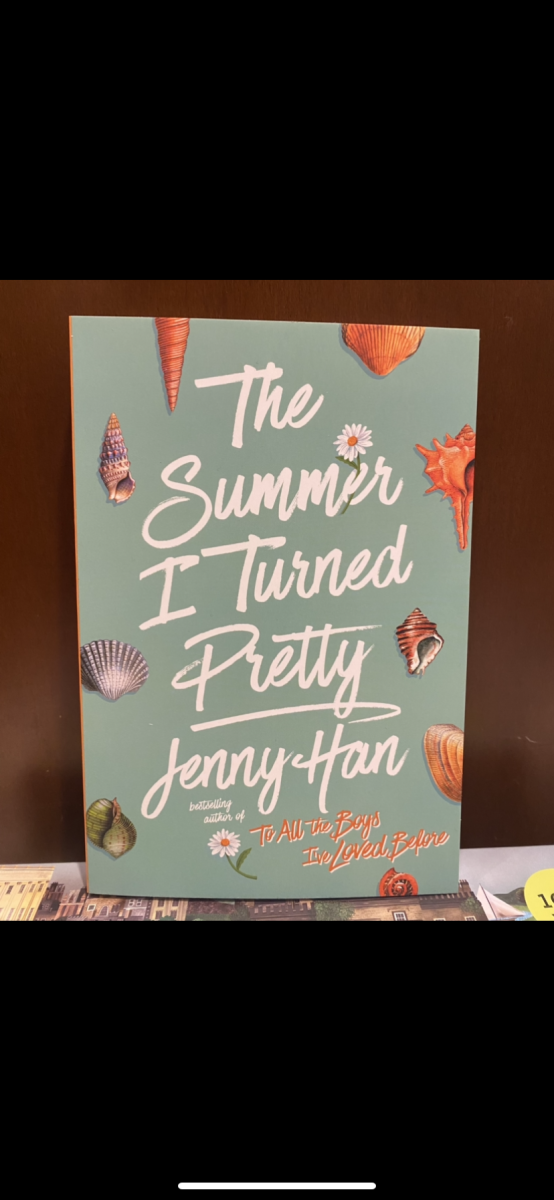The 21st century was a period of greatly increasing representation for women, most notably in American drama: shows such as “Gilmore Girls,” “Gossip Girl,” “Glee,” and, more recently, “Never Have I Ever” are characteristic of the period’s female-centered media. However, this representation hasn’t necessarily been positive; all of these shows’ female protagonists follow a common, stereotypical, harmful character design. Indeed, every young woman in these shows embodies the “Type A” stereotype of young women—high-strung and intense, overly conscientious and achievement-obsessed, and even aggressive and unduly competitive. This media phenomenon is especially problematic considering the novelty of meaningful representation of women; if audiences become accustomed to only one type of women’s representation, audiences will only appreciate female characters who fit the stereotype or even be left with a mistaken impression of how strong women actually navigate the world.
One such example of harmful representation of women is Rory Gilmore from “Gilmore Girls” (2000-2007). One of Rory’s enduring aspirations is to get into Harvard, and to this end, she is extremely conscientious. However, this regard for school quickly becomes toxic: she allows only straight As, anything short of which is a decided failure; strives to win undue favor from her teacher; assiduously awaits and does extra credit, nagging her teacher for new opportunities; and exhibits a constant preoccupation with school and grades. She even entertains a malicious school rivalry with Paris Geller, a competitive peer, in order to secure the title of valedictorian in her place. Moreover, this competitiveness permeates Rory’s conversations and interactions with her mother, with whom she’s open with her goals and constantly discusses how to best improve her chances of getting into Harvard. Despite this confidence, though, Rory consistently finds herself in contention with her mother; she lashes out at her for trivial things—showing up at a parent-teacher conference unannounced, going grocery shopping rather than eating out, and more—and when things don’t go her way, acts entitled, uptight, and even rude towards her mom.
“Gossip Girl”’s (2007-2012) Blair Waldorf exhibits this same trend toward achievement, intensity, and uptightness, and is arguably the most problematic example of the stereotype. Blair is depicted as backstabbing and conniving in her pursuit of her academic ends; she sabotages Dan, a friend, when she discovers he also gets a publication internship at W Magazine; monopolizes and prevents her friends from applying to Yale University to make way for her admission; and, when she and her friend Serena ultimately get into Columbia University, hacks her to email her teachers, under the pretense of being Serena, compromising emails to get her expelled. This malice even finds a way into her personal life: she informally exiles her friend Jenny from Manhattan on account of allegedly betraying the friend group and mistreating them, promising to destroy Jenny’s reputation and life with her resources if she violates the decree; and misrepresents Serena, at a charity event—she claims Serena was admitted to and treated at a psychological institution—after believing she sees her enter a mental health facility, an act of revenge following from Serena’s decision to leave the city without telling Blair.
“Glee”’s (2009-2015) Rachel Berry reflects a similar character design. She’s similarly devoted to her academics and strives to get into NYU, becoming the only member of the club to do so despite similar aspirations among her friends. However, much like Rory and Blair, she’s ambitious to a fault; her strong aspirations often exist at the expense of others. For example, she seizes every solo in the “Glee” musical theater club, unwilling to give way to others or even her friends; becomes aloof and hostile with peers when things don’t go her way, even getting combative with the teacher of the club for not bending to her will; and gets upset when she, a white woman, isn’t allowed to play Maria, a minority Latina woman, from “West Side Story” as she sees this as a denial of an opportunity. Kurt Hummel, a member of the “Glee” club, even intentionally underperforms in a singing contest of “Defying Gravity” with Rachel in order to please and pacify her—a recognition of her unyielding and uncompromising nature.
“Never Have I Ever” (2020-2023) offers a more modern example of this “Type A” phenomenon. Devi Vishwakumar, the show’s main character, is similarly ambitious and, as a result, self-serving and backstabbing. She’s similarly preoccupied with grades and academic success, aspiring to be admitted into the Ivy League, and, to this end, monopolizes Princeton and pressures her friends not to apply; applies to all (and only) the Ivy League come admissions seasons, an inadvisable decision that leaves her with no admission and which she tries to fix by badgering her Princeton admissions officer for admission rather than recognizing her own folly; and is upset with her friend Fabiola when she gets in and not Devi, an insupportable situation that is resolved when Fabiola ultimately gives up her spot so Devi can be admitted. This toxic orientation towards academics further harms her friends and boyfriends: she’s toxically competitive with Ben, a seeming friend, and vies to be valedictorian over him; sabotages Des, a future boyfriend, during a debate contest by pulling the host school’s fire alarm and, in the ensuing commotion, destroying Des’s team’s debate material; and persistently contrives to separate Ben and her friend Aneesa, even spreading a rumor that Aneesa is anorexic in order to humiliate her and take revenge on her for dating her academic rival Ben.
In light of these negative portrayals, it is clear that women’s representation in the twenty-first century, though increasing, was hardly improving. However, the first step towards addressing any issue is being aware of it. If we begin to recognize the harmful depictions of women and the narratives and notions they perpetuate, we can achieve a media landscape truly representative of young American women.




































